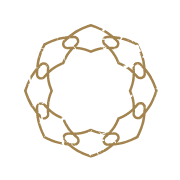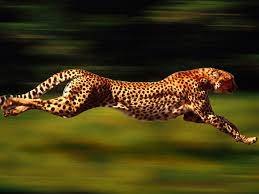Why you need to train power!
We are told resistance training is key, aerobic training is key and flexibility that’s key too, but we seldom hear of the importance of power training for us nonprofessional athlete folks.
Think of power training and thoughts of Usain Bolt doing some crazy exercise routine or a boxer doing rounds on a bag are sure come to mind. Of course, that is power training but just because us regular Joe and Jane Soaps aren’t planning on togging out in the Olympics any time soon doesn’t mean that we shouldn’t be training that vital attribute.
In fact, we might argue that we should be training it even more. You see, every activity we do whether on the playing field or during our everyday lives requires us to react by generating force. The quicker we can apply that force the more powerful we are.
In real terms, say you’re out hiking with a friend, you’re just as strong and just aerobically fit as them but they get to the top of the mountain first. How did that happen? They are more powerful than you, they can apply the muscular work faster.
Ok so you’re not a hiker nor an Olympian why does power training matter to you. Well, imagine stepping off a curb that is higher than you judged. The speed at which you can change your foot position and gather your balance before falling is power. It is the muscular work divided by the time it took to complete the work that implies the level of power you have.
Ever noticed that as you age it is taking you longer to do things, amongst the decline of other physical attributes that is a regression of power that’s slowing you down and unfortunately power is the aspect of physicality that deadens the fastest with age.
Read on to regain that spritely pep in your step.
How to train power.
Simple. Move fast. We can do this by lifting weights with speed, jumping, sprinting, dancing and throwing, tumbling etc. The intention is important. You must look to move the load, be it an external load or your own bodyweight, as fast as possible. Be mindful that there is a difference between just moving chaotically fast and moving the load fast. A common mistake seen in power training is people just trying to do something mindlessly fast, they do a bunch of fast reps but very few powerful reps and end up turning it into a cardiovascular conditioning session. Imagine a hamster spinning its little paws. Fast but not powerful. Now imagine a cheetah chasing a zebra, think of the striations of muscle as its legs drive into the ground. Each step they create immense amounts of power.
Create power by thinking about the speed of the individual rep and not the speed in between the reps. Be a cheetah not a hamster.
Another big mistake is doing too many reps and once more turning it into cardiovascular training rather than power training. Without getting too sciene-y we only have a finite amount of energy that we can use for maximum power creation before we need to rest. If you are training power correctly then you will need less reps and take plenty of rest.
It’s not actually that simple.
As simple as the concept is for power training the application is unfortunately not so straight forward. Many of us are just too deconditioned to jump straight into power training. Awareness, strength and mobility are not at a high enough level that will allow the body to adapt to power training without significant chance of injury.
That is why we have a leveled based system at the gym. For new members it is all about building the prerequisites.
Bodily awareness so that we can feel how our bodies move through space and react to different forces.
Movement quality and mobility so that our joints can move safely through the patterns needed to create force.
Learning how to improve balance and rhythm so that we can be dynamic with our reactions.
Building base level strength so that the muscles, tendons and ligaments can withstand the forces being exerted.
All these qualities must come first. While these components aren’t mutually exclusive, and elements of power training can be incorporated in a beginner program it is strongly advised that you do not just start sprinting or doing ballistic weight training after a period of inactivity.
Exercises for begining power training.
Once you feel confident in your movement, your bodily control, mobility and strength here are some exercises to get started in power training. Just a handful of thousands of variations you can have fun with.
Medcine Ball work
Medicine Balls are fun and relatively safe. Slams and throws allow you create maximal force without having to worry about the eccentric phase or slowing the load down. Thrown the ball and let it go!
Sled Pushes
Sled work is a great way to build the proper mechanics and strength to run fast. The loaded sled add resistance to your run so you can add work and increase your force while trying to move fast without any eccentric loading. It’s also an awful lot of fun.
Hopping and easy bounds.
Hopping and bounding is a great way to build up the resiliency and strength in your lower limbs needed for power work. Start with low volume and learn how to land and absorb firce befroe adding these in. A classic and a recent favorite of mine is jump rope.
Power Rows
The power row starts to bring in elements of coordination and balance. The sequencing of these is vital for generating real power when doing something like a sprint or a throw but also in catching yourself on a ball.
Kettlebell Swing
The kettlebell swing is a little more technical and requires a great amount of body awareness but once you get eh technique down it is the gift that will keep on giving. A true utilitarian exercise that covers strength, conditioning and power training all in one.
So there you have it. A brief introduction into why and how to incorporate power training. Learn your body, get strong, get mobile, started moving with speed and stay springy friends!


